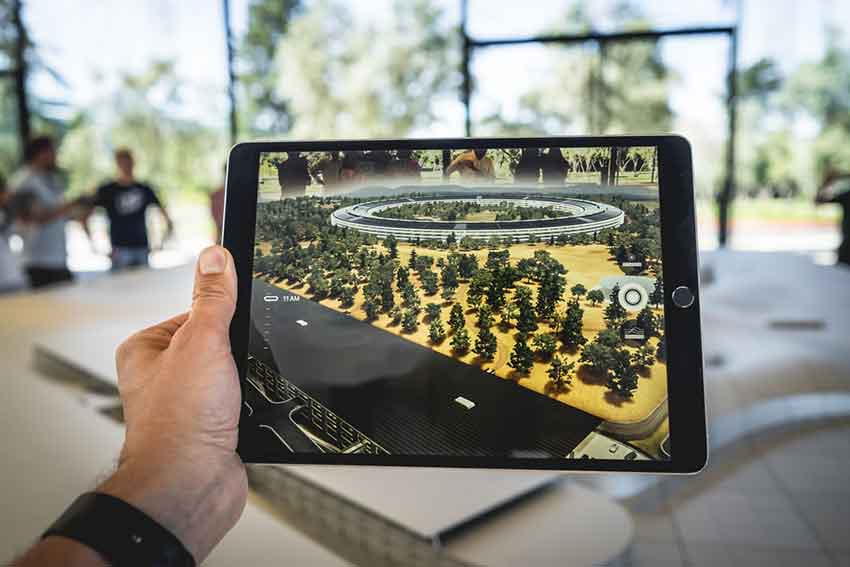Show:
How AR in eCommerce is Transforming Customer Experience
Augmented reality (AR) transforms the way consumers interact with retail brands.
Enhanced and more engaged online shopping experiences are changing the face of eCommerce. Integration of AR technology into buying experiences is taking hold rapidly: as much as 61% of consumers prefer AR-powered stores, while 40% would pay more for a product that they experience through AR.

In this article, we will go over a brief overview of what augmented reality is and what it represents for the online retail industry.
Finally, we will examine the ways in which this advanced technology transforms the customer experience by impacting every step of customer journey.
What Is Augmented Reality in eCommerce?
Augmented reality is the ability of certain technological devices and programs to overlay and share physical objects and images onto the user’s real-world view.
It “supplements” the real world by adding digital elements and computer-generated content to it, making the reality “augmented.”
AR is being increasingly used in customer interaction. eCommerce brands are interacting with their consumers on mobile devices and other displays in three dimensions, transforming the customer journey into an immersive, 360° visual experience.
Augmented reality is enriching the relationship between a brand and its consumers by adding value to each stage of the customer journey.
But just how is it adding value?
Let’s take a look into that.
It Removes Doubt From Buying Decisions
One of the biggest roadblocks in eCommerce is the fact that shoppers are not able to physically examine and try out the product before buying it. This causes return rates that are five times higher in online stores than retail shops.

This major jeopardy for online retailers’ revenue, marketing, SEO and overall business is overcome with AR technology.
Using interactive AR apps, consumers can get a real-life insight into any product they are considering and acquire knowledge about how it would look on them or in their homes.
For instance, IKEA is enabling their shoppers to get this well-rounded view of the item they are buying by showing it in a real-life environment: a user scans their room with a phone and IKEA’s app places the piece of furniture into the room on the phone’s screen.
Apparel retailers are also adding AR to their apps to let buyers try out a piece of clothing or footwear prior to purchase.
This informs the user’s buying decision and, by being able to judge a product from all angles, they are more likely to buy the product and not return it, boosting buyer satisfaction.
It Provides An Immersive Try-As-You-Buy Experience
The above point of sale argument brings another benefit to consumers – they get to enjoy the immersive, 360° shopping experience as they would in brick-and-mortar stores.
The try-as-you-buy experience provides massive value to the buyer journey and boosts eCommerce brands’ revenue thanks to a great rate of conversions.
Virtual dressing rooms and makeovers are the sort of experience that generates a positive brand image and lends an inventive, trailblazing reputation to the company using it. More importantly, it is the sort of experience that transforms the notion of being a customer and makes brick-and-mortar shopping available at home.
Any modern website design company, as part of their services, offers building of eCommerce websites and apps that leverage AR technology, giving customers this sort of experience.

It Adds Value Through Interactive Packaging
Augmented reality in eCommerce and commerce is also applied to interactive packaging that shows compelling and informative product-related visuals to users.
Using image tracking and code scans, pointing phones to certain products will display useful insights about them. By scanning the product package, a card or brochure, prospective customers can view the product demonstration and get a link to the eCommerce website.
For instance, cereal brands such as Nesquik project AR games that can be played at the breakfast table when users scan their cereal boxes. Ketchup maker Heinz’s interactive packaging shows a range of different recipes that use ketchup.
To eCommerce brands, this lends a perception of them as a customer-focused and tech-savvy businesses. To consumers who are at the point of sale, this provides additional benefits through an engaging experience that informs and entertains them.
It Generates Interest In Your Brand
The connection of a physical to a digital world made possible through AR drives huge interest in a brand using it, its products and services.
This kind of technology captures the imagination of prospects and consumers and quickly goes viral to reach thousands if not millions of admirers. To achieve maximum exposure, some brands upgrade their “ordinary” marketing material such as print ads and posters into AR-powered campaigns.

One such campaign was for Netflix’s TV show “Stranger Things.” Using Snapchat’s AR app, the company generated interest for the series by turning users’ rooms into the ambiance from the show.
In a more relatable eCommerce move, Pepsi Max put up AR-enabled ads on London bus stops that linked back to Pepsi’s eStore.
It Gives An Advantage To Product Support Teams
Thanks to advancements in augmented reality technology, consumers get the eCommerce help they need through interactive AR applications – without contacting support representatives.
Connecting FAQ resources and helpsheet documents to AR saves the consumer’s time and makes answers they are looking for instantly reachable.
Mercedes’ virtual assistant provides insight into each vehicle’s different functionalities and lets users report car issues, resulting in a seamless user experience.
eCommerce customers often do not have a strong understanding of products and can have hard time explaining what is wrong with their purchased items to customer support agents.
AR apps, such as the Mercedes one, makes reporting faults much easier by holding a phone to a product in question. The app’s interface shows specific product parts in real-time.
The customer can explain to customer support, in greater detail, what went wrong with the product or can even diagnose and repair the issue themself.
It Delivers A Hands-On Experience To Customer Service Agents
Closely related to the above question of customer support, AR apps make staff training much more efficient and quicker.
This training is, of course, critical for business – when browsing products online, numerous prospects and customers want to speak to a live chat representative before buying.
For businesses that sell a wide range of products, sometimes it is not possible for customer service agents to know the details of each and every product.
In order to be able to properly explain the properties of every single product, the staff has to undergo some kind of hands-on training.
AR apps can provide this experience without staff members having to handle every item in real life. They do so by replicating a real product in 3D in an app or computer screen interface.
Conclusion
Augmented reality changed the way shoppers view online shopping and solved some of the biggest obstacles along the way – but it also transformed the way brands interact with consumers.

 Return to Previous Page
Return to Previous Page








